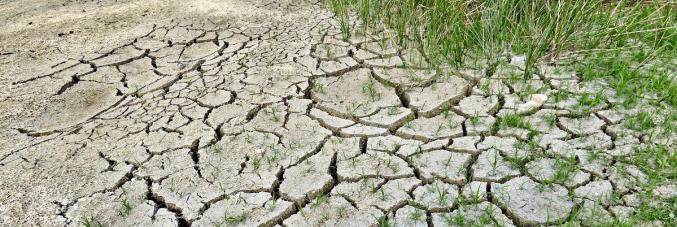
Even ecosystems have a limit!
04.06.2024
How long can an ecosystem endure before witnessing an irreversible change? What can be done to prevent or mitigate the effects of human activities, and will it work?
The high and synergistic impact of human pressures can lead ecosystems to undergo drastic, unexpected, and often irreversible changes. Ecological resilience is the capability of an ecosystem to maintain the same structure and function and avoid crossing catastrophic tipping points (i.e. undergoing irreversible regime shifts). To combat global climate change it is therefore necessary to promote and quantify the resilience of ecosystems in a to preserve the important benefits they provide us, by understanding and anticipating changes to better manage natural resources.
The study entitled Resilience assessment in complex natural systems (Camilla Sguotti, Paraskevas Vasilakopoulos, Evangelos Tzanatos and Romain Frelat) was published in the Proceedings of the Royal Society under first author Camilla Sguotti, a researcher in the Department of Biology of the University of Padua. The work saw collaboration with the Joint Research Center of the European Union, the University of Patras (Greece), and the International Livestock Research Institute (Kenya) by proposing the CUSPRA approach as a new statistical method for estimating the resilience of ecosystems to anticipate possible regime changes. The model was developed by extending the stochastic cusp model, as proposed by Thom in the 1970s under the mathematical-statistical model based on the catastrophe theory. The CUSPRA approach can identify the presence of a regime shift due to two synergistic pressures and determine how far the system is from the change. Through this model, it will therefore be possible to quantify the resilience of an ecosystem by calculating it as the distance from an irreversible change.
Regime shifts are increasingly frequent and are occurring in many natural systems: desertification, transition of complex marine ecosystems such as coral reefs, and melting of ice are just some examples. The Global Tipping Point Report, to which I contributed, published as part of COP 28, showed that 25 systems in the biosphere have already undergone these dynamics – states Camilla Sguotti, first author of the study –. Some statistical methods for estimating resilience and therefore anticipating possible regime changes exist, but they are difficult to apply to the time series of real ecosystems which are often short and highly variable. This is why we developed the CUSPRA approach, which estimates the resilience of ecosystems to external pressures.
This new Cusp Resilience Assessment (CUSPRA) has three characteristics:
1. it provides estimates on how likely a system is to cross a tipping point (in the form of a cusp bifurcation) characterized by hysteresis
2. it assesses resilience about multiple external drivers and
3. it produces straightforward results for ecosystem-based management
The study demonstrates the application of the method to different marine systems such as the cod population in the Barents Sea or the fish community of the North Sea and the Mediterranean Sea.
CUSPRA represents a significant step forward in estimating the resilience of natural systems at a statistical level, which is fundamental to supporting the sustainable management of environmental resources.



